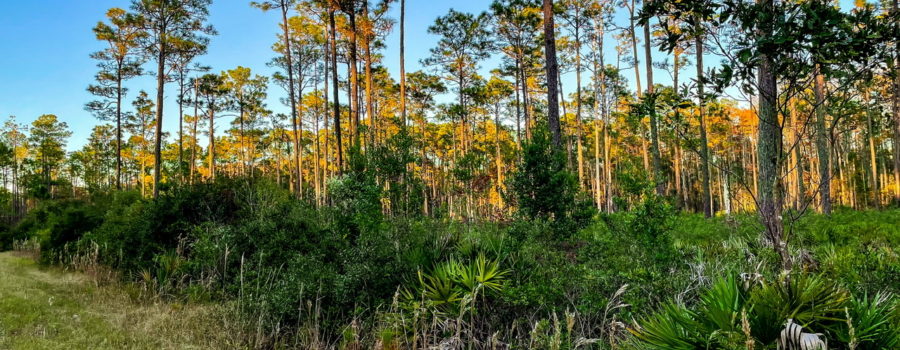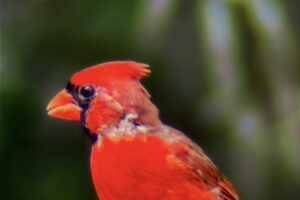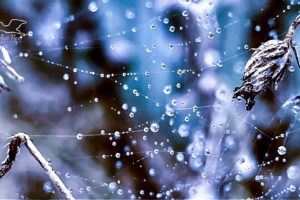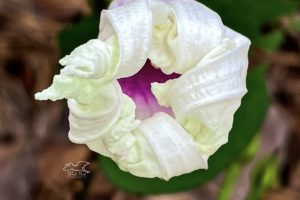The Pine Flatwoods are a Unique and Beautiful Florida Habitat

There are 81 major habitats (depending on what system you use) in the state of Florida, and each one has unique characteristics and flora and fauna. Of course, there will be some overlap in what lives in each habitat since most life forms are capable of adapting to one degree or another, and habitats blend, they don’t abruptly stop and start. The various habitats can be either terrestrial, freshwater, or saltwater. We have already discussed the habitat I’m most familiar with since it’s where I live; the sandhills. Tonight, we’re going to talk about the most extensive habitat in Florida, the pine flatwoods. Interestingly, this habitat is found in no other part of the world except the state of Florida.

The pine flatwoods are a little bit more complicated than the sandhills in that they actually come in several sub-varieties. The pine flatwoods can be either wet (mesic) as they are in north and central Florida, or they can be dry (xeric) as they are in south Florida. All pine flatwoods have several defining features which include acidic, sandy soil, a low, flat topography, and open, mainly pine woods that have frequent fires. The main difference is that the mesic pine flatwoods have a layer of clay beneath the sand that keeps the water from draining well, while the xeric pine flatwoods do not. Obviously, the level of retained moisture effects some of the flora and fauna that live in two types of flatwoods, but a surprising number of them are the same. For example, both areas are dominated by slash pine, longleaf pine, south Florida slash pine, and/or loblolly pine. Both areas are also home to animals like gopher tortoises, black bears, wild turkeys, and white tailed deer. The understory of these areas can vary and can be scrubby brush, herbaceous shrubs, and low grasses and herbs. The exact composition will depend on moisture levels, soil composition, and when the last fire came through.

The mesic pine flatwoods can be found from Levy and St. John’s counties south through the central Florida areas of Osceola and Polk counties. Much of the Gothe State Forest land is mesic pine flatwoods which are used for timber farming, logging, and outdoor recreation. The pine flatwoods habitat can transition into either sandhills or scrub habitats on the one hand, or wetlands on the other. Just like the sandhills, the most important natural factor in maintaining this habitat is fire. Beneficial fires are generally low level and burn the understory vegetation, leaving the pines unscathed. Burning keeps the vegetation from over growing, opens up the ground to sunlight, and promotes seed production and seed germination in many of the flowering species. In fact, some of these species actually require fire for seed germination. A lack of regular fire can seriously alter the plant makeup of the understory, result in more serious fires later on, and allow nonnative species to invade the habitat and potentially outcompete native species. For this reason, prescribed burns are often used as part of the management for these areas.

The state of Florida is definitely an incredible place to live, or even to visit. Our numerous and varied habitats have given rise to some amazing wildlife and wildflowers, some of which can only be found here. Often just traveling a few miles will bring you into a whole new habitat with new and interesting things to see. In fact, when I visited the boardwalk in the Gothe State Forest, about 20 miles from my home, I drove through the sandhills to the half mile boardwalk that started in the pine flatwoods and ended in the wetlands. That’s three habitats in a less than 20 mile trip! I would call that an outdoorsman paradise!

If you like beautiful nature photography and artwork accompanied by informative and interesting nature related content, then you’ll love this blog! Be the first to get new episodes by subscribing below.





Recent Comments